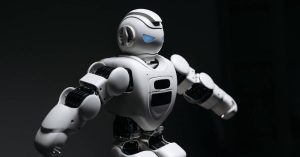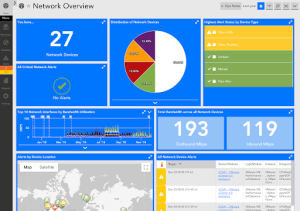A China Send Monkeys To Space station will send mice and macaque monkeys for a study. They will be placed in small test cabinets and will be exposed to microgravity. This will help scientists learn more about the animals’ behavior and habits. The experiment will take place in the Wentian Lab Module of the Chinese Space Station Tiangong. The module is already outfitted with small test cabinets to house snails and fish. However, they will reconfigure the module to house the monkeys.
Challenges of life sciences experiment in space
Performing a life science experiment in space involves a unique set of challenges. Scientists must adapt their protocols to the conditions of microgravity and must also account for non-linear properties of gases and fluids. In addition, they must control the pH levels of the environment to ensure the survival of the animals.
To overcome these challenges, scientists are increasingly turning to space-based research. Microgravity is ideal for studies that use cell culture techniques. For example, a microgravity environment encourages protein crystallization, allowing scientists to study how drugs are affected in the body. These experiments are now routinely conducted in space by a wide range of companies.
The technology required for such experiments in space is unique. Researchers must also adapt their methods to work on nonstandard equipment. The ISS National Lab is an example of such a research environment. Researchers at the ISS must be able to carry out ground experiments while undergoing experiments in space.
In the waning days of the space shuttle program, NASA sought cooperation from the Russian Space Agency, and increased funding for the ISS. Mackowski argues that this cooperation is possible because life science research provided a reason for cooperation. The ISS life science program has involved various countries such as Israel, Brazil, and Ukraine.
The space environment presents unique stresses to living systems, such as radiation, microgravity, and isolation. Understanding how these conditions affect biology is crucial for sustaining crewed space exploration. Understanding the effects of these stresses on the human body will enable the development of bioregenerative technologies and limit the risk of infection. To this end, scientists across the globe are conducting space omics experiments using model organisms and human samples.
As an additional consideration, space experiments also pose financial risks. Space missions can be expensive and take a lot of time, which can slow the pace of progress. As a result, life sciences experiments in space are unlikely to be profitable if done exclusively by the private sector. To avoid this, the ESA is working to develop cost-benefit analyses and other methods to help scientists conduct their experiments in space.
Developing new techniques for DNA repair is essential to space exploration. Radiation and other harsh environments in space can cause damage to DNA, and the conditions of space can make the repair process more difficult. Researchers have recently completed a study on the International Space Station by successfully generating DNA breaks in common yeast. The researchers then sequenced the repaired DNA to find out how the break was repaired.
China Send Monkeys To Space make monkeys have alive in space
Using monkeys in space will pose challenges for researchers. They must ensure that the animals are comfortable and fed regularly. The space environment is highly stressful for animals. This will make it difficult to maintain a pregnancy. Further, monkeys that are kept in space will have to be separated from their waste. This could cause them a great deal of stress, and they may respond by being less active or even violent.
A Chinese research team plans to send monkeys to space on its Tiangong module, which is the first permanent human outpost in orbit. The experiment will also test whether it is possible to reproduce monkeys in space. This is an ambitious plan, but one that could lead to the first animals having sex in space in the near future. The Tiangong space station has multiple modules that could hold the monkeys. The Wentian module, for instance, is designed to be reconfigured and expandable, so the Chinese may start by taking smaller monkeys to orbit, and then move on to larger ones. However, the bigger the animal, the more complicated it will be.
Although human sex in space is not yet possible, scientists have successfully used monkeys to carry out experiments in high-altitude balloon flights to test their physiological responses, life support systems, and radiation exposure. This research is a step forward in the field of space exploration, and may improve our understanding of how animals live and function in space.
Chinese scientists plan to send monkeys to the Tiangong space station in 2018. During the experiment, monkeys will have sex and reproduce. This could have huge implications for human space colonization. The monkeys will be kept inside the station’s largest capsule and two biological test cabinets. The experiment is expected to last for about a year. The researchers will also use this experiment to learn how humans can reproduce in space.
It has been difficult to study complex life forms, such as monkeys or rats, in space. However, the Soviets have managed to train mice to perform sexual behavior even during an 18-day space flight. However, the mice were not pregnant during the experiment and did not give birth after returning to Earth.
Impact of absence of gravity on testicles
The impact of absence of gravity on testicles in monkeys sent to space is not yet fully understood, but it’s clear that the absence of gravity may have significant effects on male reproductive organs. In fact, Soviet researchers trained mice to engage in sexual activity during an 18-day mission to space, but after returning to Earth, the mice were not able to reproduce. This suggests that the absence of gravity could have profound effects on the reproductive organs, such as the testicles, and cause significant changes in sex hormone levels.
The absence of gravity may also affect the testicles of large animals, which could potentially damage reproductive organs, as previous experiments in the ground have shown. Specifically, researchers have noticed an increased vascularization of the testicles and a decrease in their mass and interstitial space.
Problems of sending mice into space
Scientists are worried about the health risks of sending mice into space because the immune system of mice is not the same as a human’s. The microgravity environment, which weighs heavily on space travelers, may also affect immune function. The lack of Earth’s protective atmosphere also makes it possible for some infectious microbes to thrive in space. These problems may be mitigated by boosting astronaut immunity with interventions like gut microbiome probiotics and anti-inflammatory drugs.
Scientists have used genetically modified mice to study the effects of microgravity on mice. The mice were genetically altered to lack a protein called myostatin. The mice were then sent to space and splashed down in the Pacific Ocean, where they were measured and analyzed. Despite these risks, the results were promising.
Mice also play an important role in space experiments, and are perfect test subjects. These creatures are cheap and easy to care for and can perform the equivalent of many years’ worth of human testing in a fraction of the time. In addition, mice are mammals, and they share many similarities with humans. For instance, astromial mice undergo a 15 percent thinning of their skin. These animals can help scientists learn more about microgravity and radiation.
Muscles atrophy and bones become weaker. The two researchers approached NASA for funding, but they failed miserably. The two scientists then decided to take the next step and move to Connecticut,
Although mice were sent into space, their survival may not be as easy as many scientists thought. Several mice were not recovered from the spacecraft. A recent experiment conducted by NASA and the Russian Institute of Biomedical Problems sent mice into space but failed to reach a sufficient altitude for true spaceflight.






